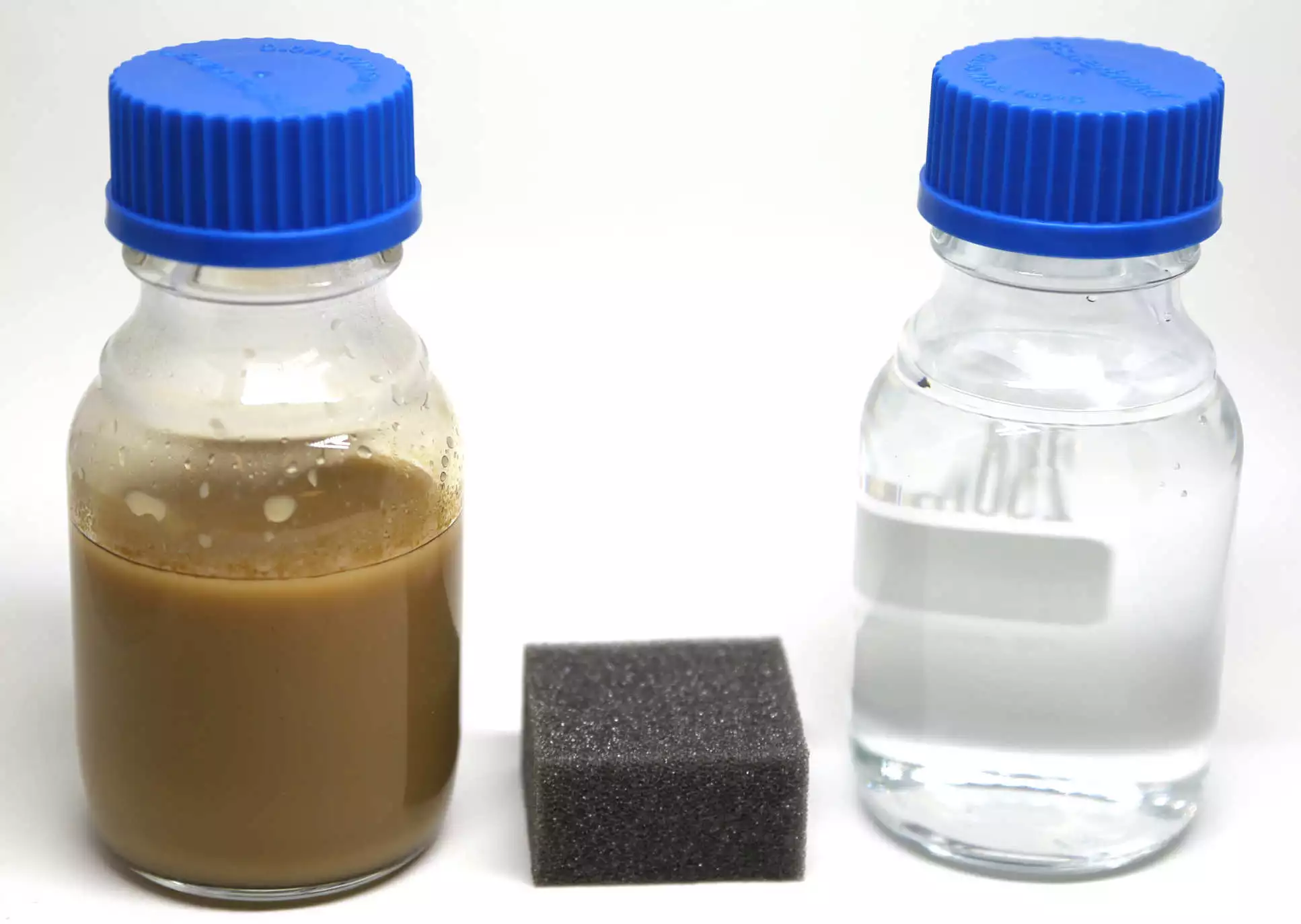Although many materials have been created to soak up oil spills, most of them are designed to simply capture the bulk of the floating slick. A new sponge, however, specializes in grabbing the tiny suspended oil droplets that would otherwise be missed.
The sponge was initially developed by Imperial College London's Dr. Pavani Cherukupally, when she was a PhD student at the University of Toronto.
That early version was made from ordinary polyurethane foam, although its pore size, surface chemistry and surface area had all been tweaked. Doing so increased the foam's ability to attract and capture oil droplets, while still allowing water to pass through. And even though it was able to capture over 95 percent of the oil in water samples, it took three hours to do so, which would be impractical in real-world scenarios.
Additionally, it worked best at a water pH level of 5.6. According to Cherukupally, the pH of water needing to be treated can be as high as 10, at which point the original sponge only captured six to seven percent of oil droplets.
Working with colleagues at Imperial and U Toronto, Cherukupally has now addressed these shortcomings in a new version of the material. The main improvement comes in the addition of tiny nanocrystalline silicon particles. A coating of these allows for better tweaking of the sponge's surface area and surface chemistry, allowing it capture oil droplets much quicker, and under a wider range of acidity levels. In fact, it now captures 90 percent of oil droplets within 10 minutes.

Once the sponge is saturated with oil, it is simply removed from the water, treated with a solvent in order to remove the captured oil, and then reused. And while the material is currently intended to be utilized in the treatment of wastewater, the scientists state that it could be adapted for use on freshwater and marine oil spills.
A paper on the research, which was co-authored by the University of Toronto's Prof. Amy Bilton, was recently published in the journal Nature Sustainability.
Sources: Imperial College London, University of Toronto





